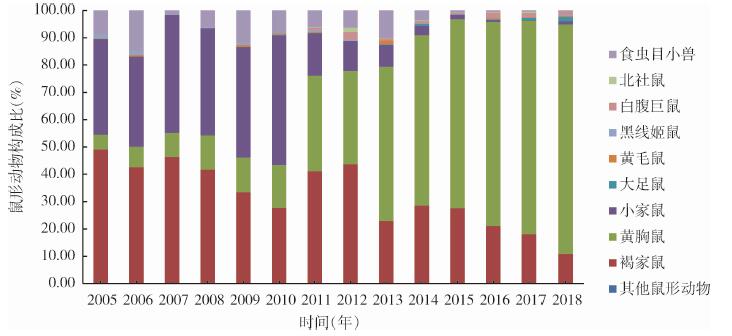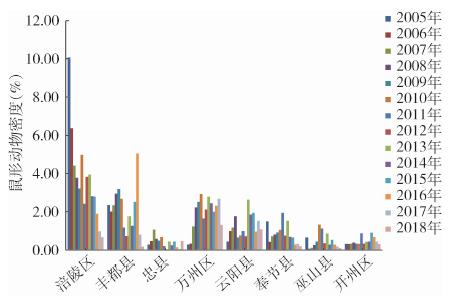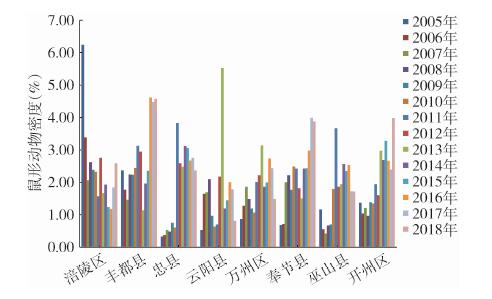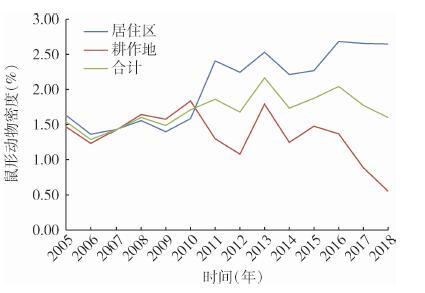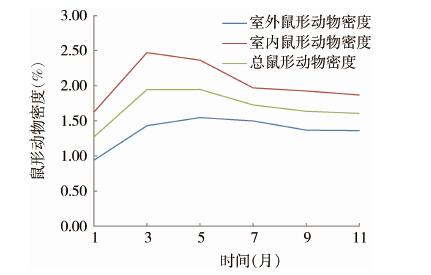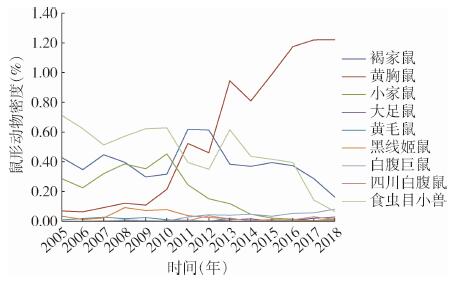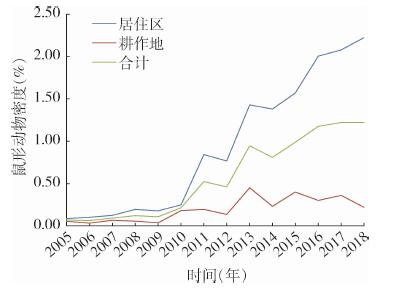| [1] |
符坤, 张六一, 任强. 蓄水前后三峡库区气候时空变化特征[J]. 环境影响评价, 2018, 40(3): 82-86, 96. Fu K, Zhang LY, Ren Q. Spatial and temporal characteristics of climate change in Three Gorges Reservoir Area before and after impoundment[J]. Environ Impact Asses, 2018, 40(3): 82-86, 96. DOI:10.14068/j.ceia.2018.03.019 |
|
| [2] |
王国庆, 张建云, 贺瑞敏, 等. 三峡工程对区域气候影响有多大[J]. 中国三峡, 2009(11): 30-35. Wang GQ, Zhang JY, He RM, et al. How much does the Three Gorges Project affect regional climate[J]. China Three Gorges, 2009(11): 30-35. |
|
| [3] |
赖琼, 郭天祥. 历史的经验与三峡库区的鼠疫危机[J]. 唐都学刊, 2010, 26(5): 93-97. Lai Q, Guo TX. The experiences of history and the plague crisis at the Three Gorges Reservoir Area[J]. Tangdu J, 2010, 26(5): 93-97. DOI:10.3969/j.issn.1001-0300.2010.05.020 |
|
| [4] |
季恒青, 贾庆良, 汪新丽, 等. 三峡库区重庆段鼠疫预警研究[J]. 中国媒介生物学及控制杂志, 2008, 19(1): 49-53. H Q, Jia QL, Wang XL, et al. Studies on the early-warning of plague in the Three Gorges Reservoir region in Chongqing[J]. Chin J Vector Biol Control, 2008, 19(1): 49-53. DOI:10.3969/j.issn.1003-4692.2008.01.017 |
|
| [5] |
Clegg LX, Hankey BF, Tiwari R, et al. Estimating average annual percent change in trend analysis[J]. Stat Med, 2009, 28(29): 3670-3682. DOI:10.1002/sim.3733 |
|
| [6] |
胡文斌, 张婷, 秦威, 等. 1981-2014年江苏省昆山市全死因死亡率趋势分析[J]. 疾病监测, 2016, 31(11): 962-967. W B, Zhang T, Qin W, et al. Mortality trend and leading causes of death in Kunshan, Jiangsu, 1981-2014[J]. Dis Surveill, 2016, 31(11): 962-967. DOI:10.3784/j.issn.1003-9961.2016.11.017 |
|
| [7] |
曾四清, 孙立梅, 钟豪杰, 等. 2008-2017年广东省手足口病流行趋势变化特征的Joinpoint回归模型分析[J]. 疾病监测, 2019, 34(2): 141-146. S Q, Sun LM, Zhong HJ, et al. Joinpoint regression model analysis on epidemiological trends of hand, foot and mouth disease in Guangdong, 2008-2017[J]. Dis Surveill, 2019, 34(2): 141-146. DOI:10.3784/j.issn.1003-9961.2019.02.012 |
|
| [8] |
何亚明, 李洪, 季恒青, 等. 重庆市云阳县2018年潜在鼠疫疫源地调查分析[J]. 中国媒介生物学及控制杂志, 2019, 30(3): 327-330. Y M, Li H, Ji HQ, et al. An investigation of potential plague foci in Yunyang county, Chongqing, China, in 2018[J]. Chin J Vector Biol Control, 2019, 30(3): 327-330. DOI:10.11853/j.issn.1003.8280.2019.03.023 |
|
| [9] |
毛德强, 李洪, 张春华, 等. 三峡库区成库前后鼠疫相关鼠形动物种群及数量变化趋势[J]. 中国媒介生物学及控制杂志, 2016, 27(1): 68-70. D Q, Li H, Zhang CH, et al. Rodent characteristic changes in the Three Gorges Reservoir before and after the water storage[J]. Chin J Vector Biol Control, 2016, 27(1): 68-70. DOI:10.11853/j.issn.1003.4692.2016.01.022 |
|
| [10] |
毛德强, 李洪, 丁贤彬, 等. 三峡库区2004-2016年鼠疫预防性监测结果分析[J]. 中国地方病防治杂志, 2017, 32(8): 869. Mao DQ, Li H, Ding XB, et al. Analysis of the preventive surveillance of plague in the Three Gorges Reservoir Area from 2004 to 2016[J]. Chin J Ctrl Endem Dis, 2017, 32(8): 869. |
|
| [11] |
李洪, 毛德强, 苏培学, 等. 重庆市万州及涪陵区潜在鼠疫疫源地调查分析[J]. 中国媒介生物学及控制杂志, 2012, 23(3): 259-261. Li H, Mao DQ, Su PX, et al. Investigation of the potential plague foci in Wanzhou and Fuling sections of Chongqing[J]. Chin J Vector Biol Control, 2012, 23(3): 259-261. |
|
| [12] |
傅军, 江兵, 李洪, 等. 重庆市丰都县2013年鼠疫疫源地调查结果分析[J]. 医药卫生, 2016(10): 103. Fu J, Jiang B, Li H, et al. Analysis of survey results of plague sources in Fengdu county of Chongqing city in 2013[J]. Med Health, 2016(10): 103. |
|
| [13] |
苏培学, 汪新丽, 毛德强, 等. 三峡水库二期蓄水重庆段库底卫生清理方法及其评价[J]. 环境与健康杂志, 2005, 22(6): 484-485. P X, Wang XL, Mao DQ, et al. Sanitary clean-up method and evaluation of the bottom of Chongqing section of Three Gorges Reservoir[J]. J Environ Health, 2005, 22(6): 484-485. DOI:10.3969/j.issn.1001-5914.2005.06.041 |
|
| [14] |
喻珊, 陈艳, 郭玲, 等. 长江三峡水库四期蓄水重庆市涪陵段库底卫生清理效果分析[J]. 预防医学论坛, 2010, 16(4): 341-343. Yu S, Chen Y, Guo L, et al. Analysis of the cleaning effect on the bottom of reservoir in Fuling area, Chongqing of the Three Gorge Reservoir of Yangtze River[J]. Prev Med Trib, 2010, 16(4): 341-343. |
|
| [15] |
张美文, 王勇, 李波, 等. 洞庭湖区"社会-经济-自然复合生态系统"中的鼠类群落管理[J]. 农业现代化研究, 2018, 39(6): 986-993.
Zhang MW, Wang Y, Li B, et al. The rodent community management by concept of "the social-economic-natural complex ecosystem" in Dongting Lake Region[J]. Res Agric Mod, 2018, 39(6): 986-993. |
|
| [16] |
龙江, 汪新丽, 贾庆良, 等. 三峡库区蓄水后重庆段钩端螺旋体病流行动态监测[J]. 中华流行病学杂志, 2007, 28(4): 366-369. Long J, Wang XL, Jia QL, et al. Surveillance on the dynamics of leptospirosis epidemics in the Chongqing section of the Three Gorges dam area[J]. Chin J Epidemiol, 2007, 28(4): 366-369. DOI:10.3760/j.issn:0254-6450.2007.04.015 |
|
| [17] |
彭靖尧, 黄为, 凌华, 等. 三峡库区重庆段2014-2016年汉坦病毒鼠类宿主监测分析[J]. 检验医学与临床, 2017, 14(23): 3447-3448, 3452. J Y, Huang W, Ling H, et al. Monitoring analysis of rodent host of Hantavirus in Chongqing section of Three Gorges Reservoir during 2014-2016[J]. Lab Med Clin, 2017, 14(23): 3447-3448, 3452. DOI:10.3969/j.issn.1672-9455.2017.23.009 |
|
| [18] |
宋开莲, 贺启生, 吴定昌, 等. 2006-2015年贵州省黔西南州鼠疫监测结果分析[J]. 中华地方病学杂志, 2018, 37(6): 493-496. K L, He QS, Wu DC, et al. Analysis of the plague surveillance results in Qianxi′nan prefecture, Guizhou province from 2006 to 2015[J]. Chin J Endemiol, 2018, 37(6): 493-496. DOI:10.3760/cma.j.issn.2095-4255.2018.06.014 |
|
| [19] |
陆献蒿, 余水兰, 周建松. 2008-2014年广西百色市鼠疫监测分析[J]. 寄生虫病与感染性疾病, 2016, 14(1): 33-36. Lu XH, Yu SL, Zhou JS. Plague surveillance in Baise, Guangxi, 2008-2014[J]. Parasit Infect Dis, 2016, 14(1): 33-36. |
|
| [20] |
殷文武. 鼠疫防控应急手册[M]. 北京: 北京大学医学出版社, 2009: 84-90.
Yin WW. Plague prevention and control emergency handbook[M]. Beijing: Peking University Medical Press, 2009: 84-90.
|
|
| [21] |
杜国义, 闫东. 动物间鼠疫流行与主要宿主密度相关性研究[J]. 中国媒介生物学及控制杂志, 2019, 30(4): 442-443. G Y, Yan D. A study of the correlation between plague epidemics among animals and the density of their hosts[J]. Chin J Vector Biol Control, 2019, 30(4): 442-443. DOI:10.11853/j.issn.1003.8280.2019.04.020 |
|
 2020, Vol. 31
2020, Vol. 31